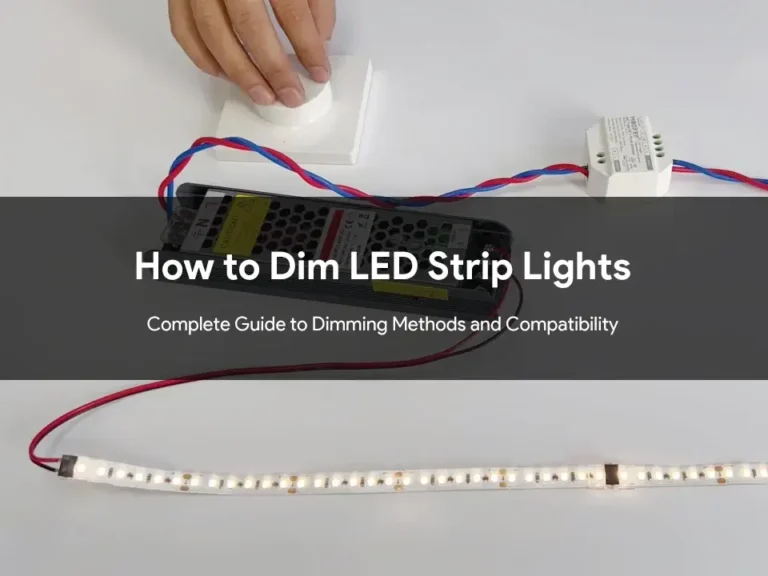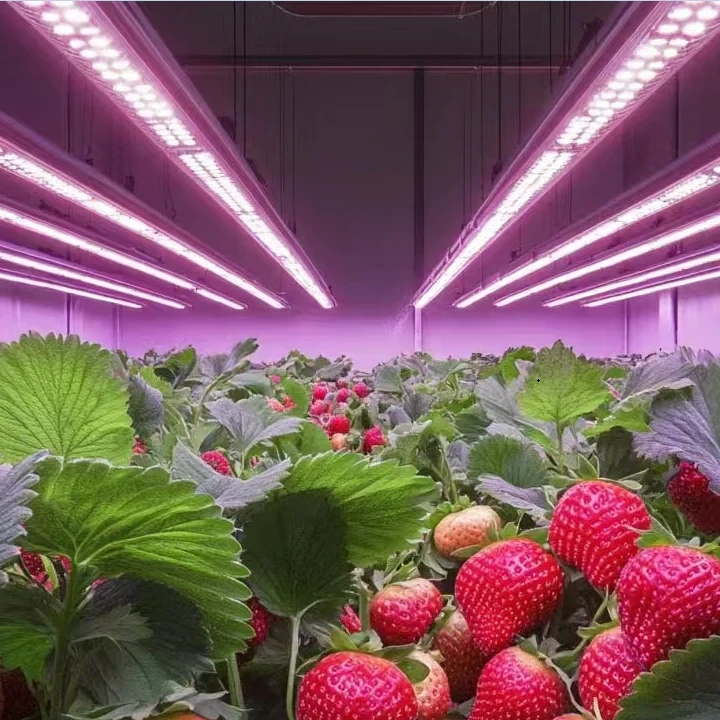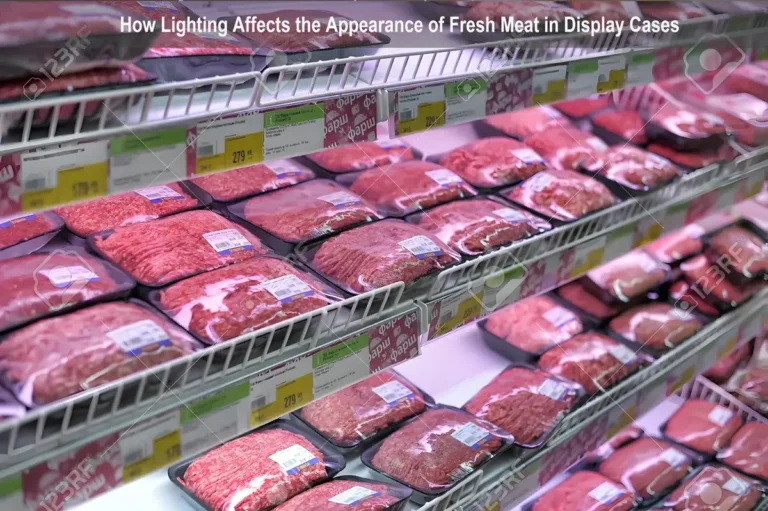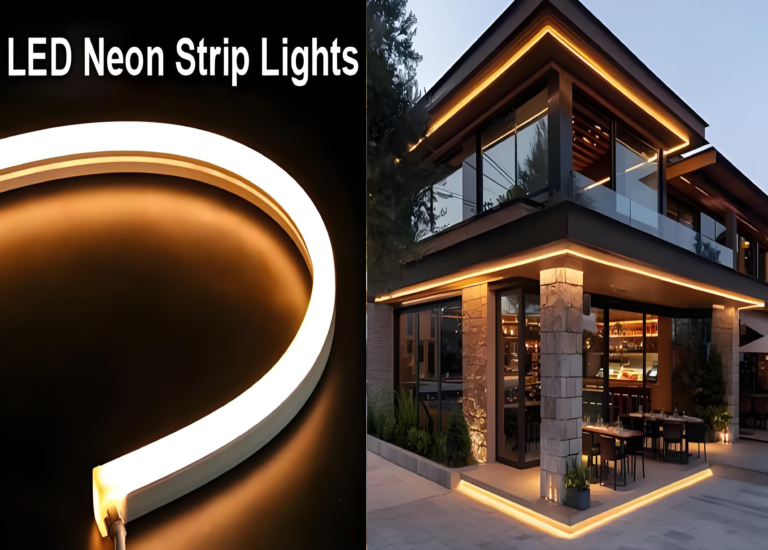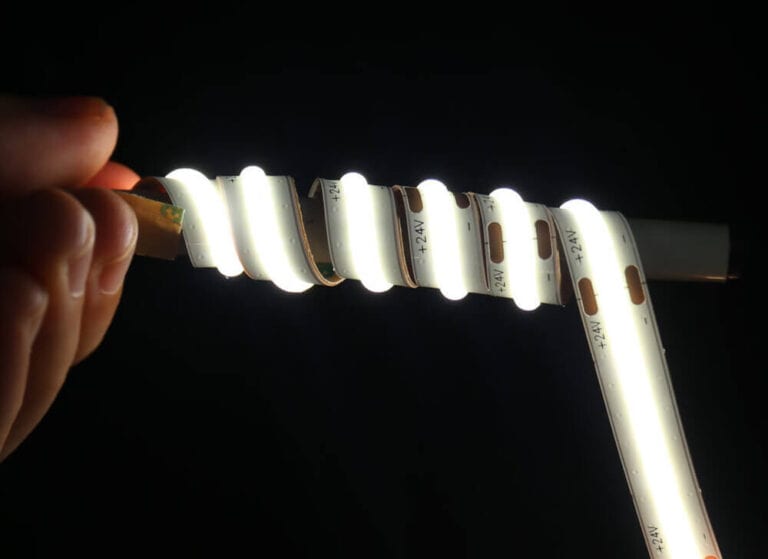Đèn LED neon được sử dụng rộng rãi trong ánh sáng kiến trúc, trang trí thương mại và các dự án biển báo do tính linh hoạt và tác động trực quan của chúng. Tuy nhiên, khi kích thước thực tế của đèn neon khác biệt đáng kể so với thông số kỹ thuật danh nghĩa, nó có thể tạo ra những thách thức cài đặt nghiêm trọng. Vấn đề này thậm chí còn trở nên quan trọng hơn trong các dự án mà khách hàng chuẩn bị các khe cài đặt dựa trên các kích thước được chỉ định. Sự không phù hợp chỉ vài milimet có thể dẫn đến sự lắp không phù hợp, có thể nhìn thấy được, hoặc thậm chí không tương thích về cấu trúc. Vì lý do này, khả năng chịu đùn - sự thay đổi theo chiều vốn có trong quá trình đùn - đóng một vai trò quan trọng trong việc đảm bảo tính nhất quán của sản phẩm và cài đặt liền mạch trong các ứng dụng LED neon chuyên nghiệp.
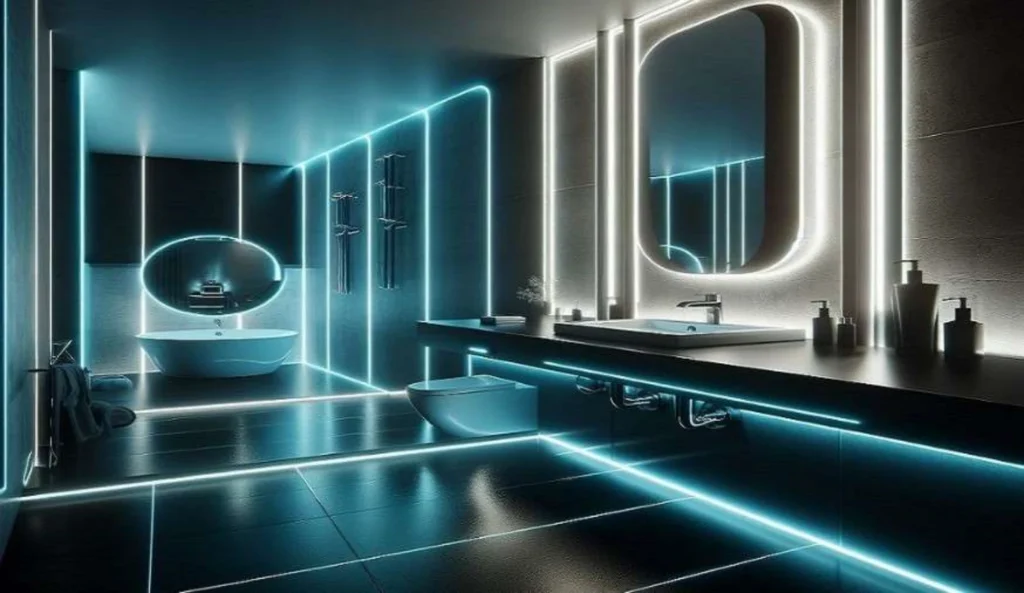
Tại sao đèn LED neon có dung sai kích thước?
tính chất vật chất
Yếu tố cơ bản nhất ảnh hưởng đến sự dung sai chiều trong đèn neon là nguyên liệu. Các cấu hình neon linh hoạt thường được làm bằng silicone hoặc PVC, cả hai đều có thể bị giãn nở và co lại nhiệt. Ngay cả khi nhiệt độ thay đổi nhẹ trong quá trình sản xuất hoặc sau này cũng có thể gây ra sự thay đổi về chiều rộng, chiều cao hoặc độ cong của việc đùn. Sự khác biệt về độ cứng hoặc công thức của vật liệu giữa các lô cũng có thể dẫn đến kích thước không nhất quán, làm cho độ ổn định của vật liệu trở thành yếu tố quan trọng trong việc kiểm soát dung sai.
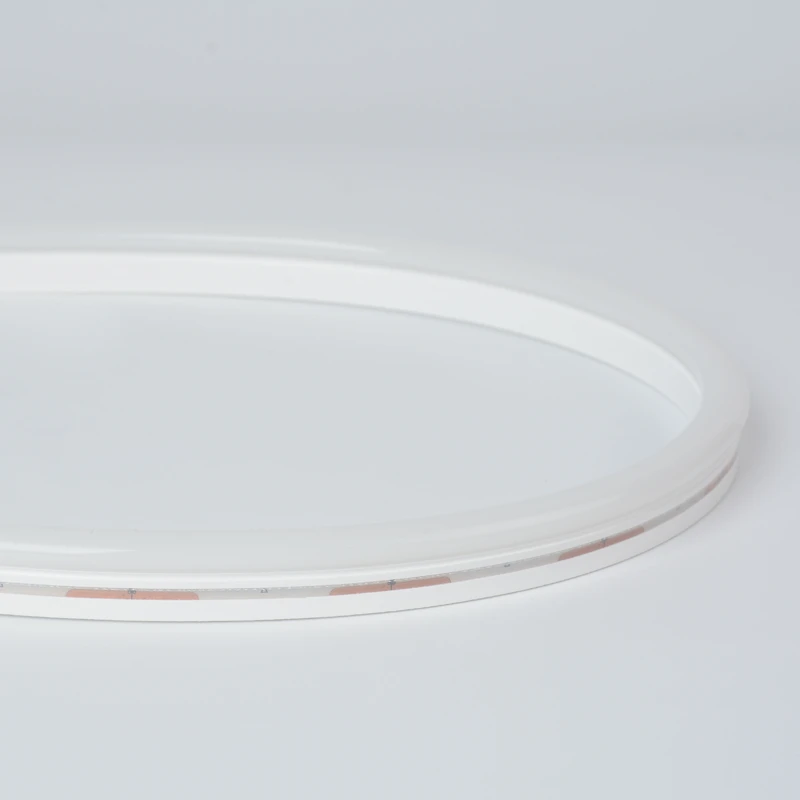
ánh sáng neon silicon
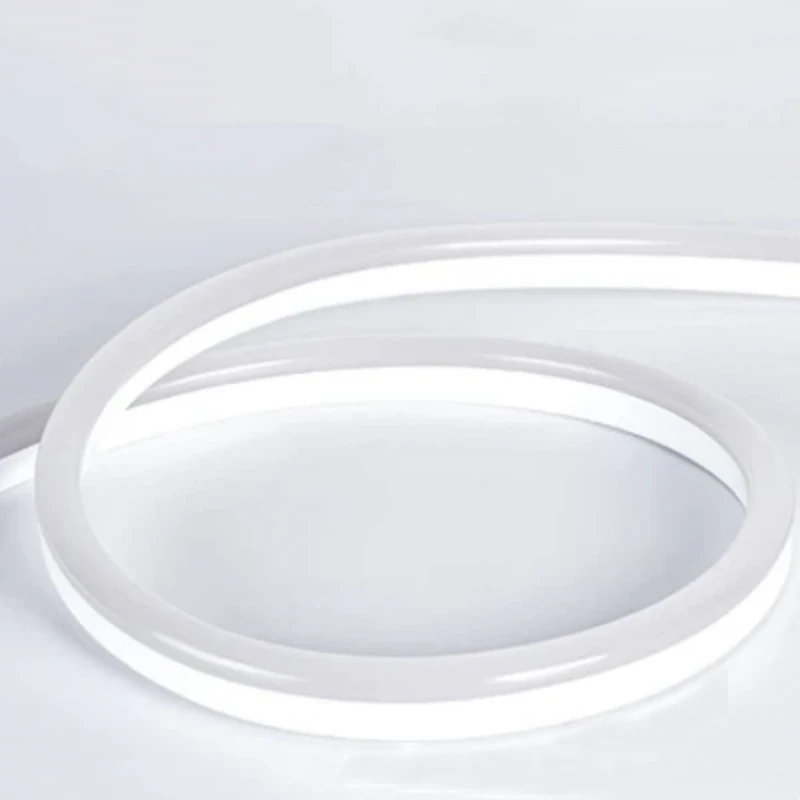
PVC ánh sáng neon
Kiểm soát quá trình đùn
Bản thân quá trình đùn là một nguồn biến đổi kích thước chính khác. Độ chính xác phụ thuộc nhiều vào độ chính xác của khuôn đùn, cũng như tính nhất quán của nhiệt độ, áp suất và tốc độ đùn. Ví dụ, nếu điều kiện làm mát không ổn định - chẳng hạn như làm mát bằng nước hoặc dòng không khí không nhất quán - cấu hình có thể co lại hoặc biến dạng không đồng đều. Những sai lệch nhỏ này có thể tích tụ, dẫn đến sản phẩm cuối cùng nằm ngoài phạm vi dung sai quy định.
Sự biến đổi lô sản xuất
Ngay cả với cùng một khuôn và vật liệu, dung sai kích thước có thể khác nhau giữa các lô sản xuất. Các yếu tố như hiệu chuẩn máy, điều chỉnh người vận hành và các điều kiện môi trường như độ ẩm có thể ảnh hưởng một cách tinh tế đến kết quả. Trên khối lượng sản xuất lớn, những biến thể này có thể ảnh hưởng trực tiếp đến khả năng tương thích của đèn LED neon với các kênh và phụ kiện gắn kết.
Áp lực giá và chi phí
Một yếu tố khác thường bị bỏ qua là giá cả. Trong các thị trường cạnh tranh cao, một số nhà cung cấp chi phí thấp có thể thỏa hiệp về chất lượng nguyên liệu hoặc giảm các bước sản xuất để cắt giảm chi phí. Sử dụng silicone, PVC tái chế hoặc thiết bị ép đùn ít chính xác hơn chắc chắn sẽ làm tăng sự thay đổi kích thước. Mặc dù giá trả trước có thể hấp dẫn, nhưng rủi ro lâu dài là không lắp, tuổi thọ giảm và chi phí bảo trì cao hơn khiến những thỏa hiệp như vậy tốn kém cho các dự án chuyên nghiệp.
Phạm vi dung sai phổ biến cho đùn đèn LED
Tiêu chuẩn chịu đựng của ngành
Trong ngành công nghiệp đèn LED, khả năng chịu đùn thường được xác định trong một biên độ nhỏ để đảm bảo sự phù hợp đáng tin cậy và xuất hiện đồng đều. Hầu hết các nhà sản xuất áp dụng dung sai kích thước từ ± 0,3 mm đến ± 1,0 mm, tùy thuộc vào kích thước và hình dạng của cấu hình. Mặc dù không có tiêu chuẩn toàn cầu duy nhất, nhưng các phạm vi này thường được chấp nhận trên các dự án chuyên nghiệp trong các ứng dụng kiến trúc và biển báo.
Sự khác biệt giữa các loại phát xạ ánh sáng
Yêu cầu dung sai cũng có thể thay đổi theo các cấu trúc phát xạ khác nhau. Neon phát xạ phía trước thường có sự kiểm soát chặt chẽ hơn vì bề mặt có thể nhìn thấy trực tiếp tác động trực tiếp đến tính đồng nhất của ánh sáng, trong khi các loại neon phát xạ bên và các loại uốn trên cho phép khả năng chịu rộng hơn một chút do tính linh hoạt của cấu trúc. Các cấu hình vùng phủ lớn hơn, chẳng hạn như 270 ° hoặc 360 ° phát ra neon, yêu cầu giám sát chặt chẽ hơn trong quá trình đùn vì sự thay đổi chiều ảnh hưởng đến cả sự phân phối ánh sáng và độ ổn định của việc lắp đặt.
Phạm vi dung sai điển hình theo kích thước và loại neon
| Loại đèn LED | Kích thước chung (W × H hoặc dia.) | Khả năng đùn điển hình |
| Neon mini (Slim) | 4 × 8 mm | ± 0,3 mm |
| Neon phát ra bên cạnh mini | 6 × 12 mm | ± 0,4 mm |
| Phát ra tiêu chuẩn | 8 × 16 mm | ± 0,5 mm |
| Phát ra bên tiêu chuẩn | 10 × 20 mm | ± 0,5 mm |
| Neon uốn trên cùng | 12 × 20 mm | ± 0,5 mm |
| Nêm phát ra phía trước rộng | 12 × 25 mm | ± 0,6 mm |
| 270 ° tròn neon | Ø16 mm | ± 0,6 mm |
| Lớn 270 ° neon | Ø20 mm | ± 0,8 mm |
| 360 ° neon linh hoạt (nhỏ) | Ø15 mm | ± 0,5 mm |
| 360 ° neon linh hoạt (lớn) | Ø25 mm | ± 1,0 mm |
Dung sai kích thước ảnh hưởng đến các ứng dụng neon như thế nào
1. Thử thách cài đặt
Khi khả năng đùn của đèn LED neon không được kiểm soát tốt, việc lắp đặt trở nên có vấn đề. Ngay cả những biến thể nhỏ có thể khiến cấu hình quá chặt hoặc quá lỏng bên trong các kênh nhôm hoặc khe gắn. Điều này thường dẫn đến khoảng trống có thể nhìn thấy, sự liên kết không đồng đều hoặc tăng lao động trong quá trình lắp đặt tại chỗ. Đối với các dự án kiến trúc quy mô lớn, kích thước nhất quán là điều cần thiết để đạt được việc lắp đặt liền mạch và giảm việc làm lại.
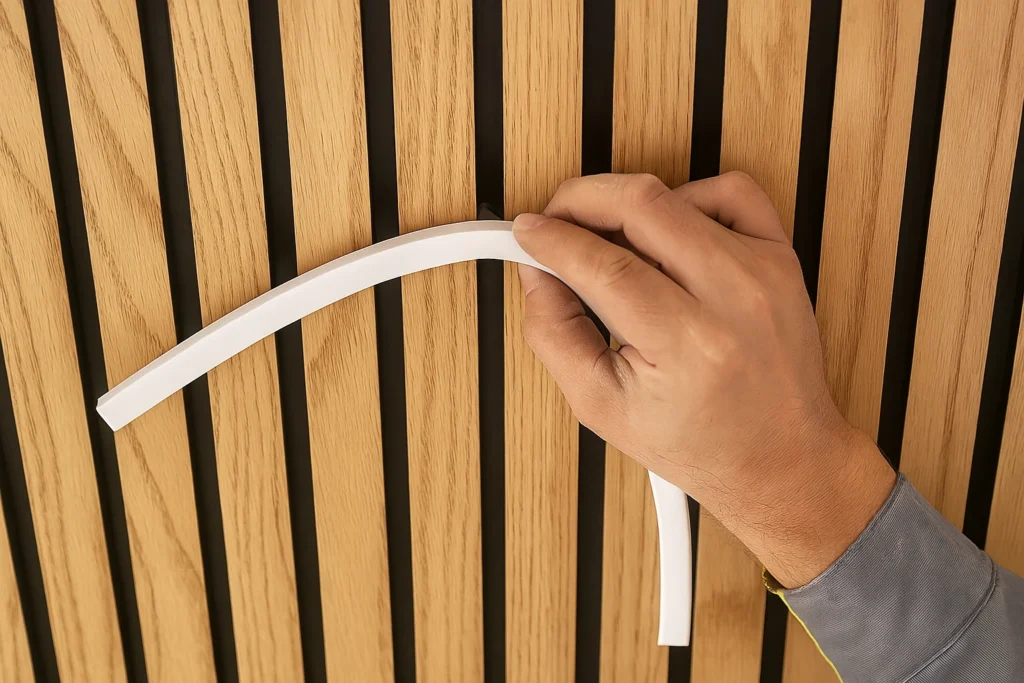
2. Tác động đến sự đồng nhất ánh sáng
Khả năng chịu đùn cũng ảnh hưởng đến tính đồng nhất của ánh sáng. Sự thay đổi độ dày của lớp silicone hoặc PVC có thể gây ra sự khuếch tán không nhất quán, dẫn đến các khu vực có vẻ sáng hơn hoặc mờ hơn. Trong Neon phát ra phía trước, sự phân bố ánh sáng không đồng đều này trở nên đặc biệt đáng chú ý, làm giảm chất lượng hình ảnh tổng thể của việc lắp đặt.
3. Đánh giá và độ tin cậy không thấm nước
Các vấn đề về khả năng chịu ảnh hưởng thêm đến việc chống thấm và độ tin cậy lâu dài của các sản phẩm LED neon. Nếu kích thước cấu hình lệch khỏi phạm vi quy định, việc niêm phong xung quanh nắp cuối, đầu nối hoặc khớp nối có thể không hiệu quả hoàn toàn. Điều này làm ảnh hưởng đến xếp hạng IP và tăng nguy cơ xâm nhập nước, có thể rút ngắn tuổi thọ của sản phẩm và gây ra lỗi trong các ứng dụng ngoài trời.
Cách kiểm soát và giải quyết các vấn đề về dung sai trong đèn LED Neon
1. Tối ưu hóa quy trình sản xuất
Bước đầu tiên trong việc giảm dung sai đùn là kiểm soát chính xác quá trình sản xuất. Khuôn có độ chính xác cao, tốc độ đùn ổn định và điều chỉnh nhiệt độ thích hợp đều đóng vai trò quan trọng trong việc duy trì kích thước nhất quán. Bảo dưỡng và hiệu chuẩn thường xuyên thiết bị đùn đảm bảo độ chính xác cao hơn nữa.
2 .Các biện pháp kiểm soát chất lượng
Kiểm soát chất lượng nghiêm ngặt cũng quan trọng không kém. Các nhà sản xuất nên thực hiện giám sát nội tuyến trong quá trình đùn và tiến hành kiểm tra kích thước cuối cùng trên đèn LED neon hoàn thiện. Ghi dữ liệu dung sai giúp phát hiện xu hướng và ngăn chặn các lô hàng bị lỗi tiếp cận khách hàng.
3. Cân nhắc thiết kế và lắp đặt dự án
Từ góc độ dự án, các nhà thiết kế và lắp đặt có thể giảm thiểu rủi ro bằng cách cho phép biên độ dung sai trong kích thước khe, kênh nhôm và phụ kiện. Lập kế hoạch với các biến thể đùn đảm bảo cài đặt tại chỗ mượt mà hơn và giảm các điều chỉnh bất ngờ.
4. Chọn một nhà cung cấp đáng tin cậy
Cuối cùng, việc lựa chọn một nhà cung cấp có chuyên môn đã được kiểm chứng về khả năng chịu đùn bằng đèn LED là rất quan trọng. Các nhà sản xuất chuyên nghiệp với thiết bị tiên tiến, chứng nhận và hệ thống chất lượng mạnh mẽ cung cấp các sản phẩm ổn định hơn, mang lại cho chủ dự án sự tự tin vào hiệu suất lâu dài.

Kết luận: Đảm bảo tính nhất quán trong các dự án đèn LED chuyên nghiệp
Dung sai chiều là một yếu tố không thể tránh khỏi trong sản xuất đèn neon LED, nhưng với các vật liệu phù hợp, kiểm soát đùn nghiêm ngặt và quản lý chất lượng chuyên nghiệp, nó có thể được giảm thiểu một cách hiệu quả. Đối với các kiến trúc sư, nhà thiết kế và nhà thầu, làm việc với một nhà cung cấp đáng tin cậy là chìa khóa để đảm bảo lắp đặt trơn tru và hiệu suất lâu dài.
lúc SignliteLED, chúng tôi sử dụng silicone bốc khói cao cấp trong tất cả việc đùn neon của chúng tôi, đảm bảo kích thước ổn định đáp ứng đầy đủ các tiêu chuẩn về khả năng chịu đựng của ngành. Nếu dự án của bạn yêu cầu kích thước duy nhất hoặc dung sai chặt chẽ hơn, nhóm của chúng tôi có thể cung cấp các giải pháp tùy chỉnh để phù hợp với thông số kỹ thuật chính xác của bạn. Liên hệ với chúng tôi ngay hôm nay để thảo luận về các yêu cầu của bạn và bảo mật đèn neon chất lượng cao được thiết kế riêng cho các ứng dụng chuyên nghiệp.

